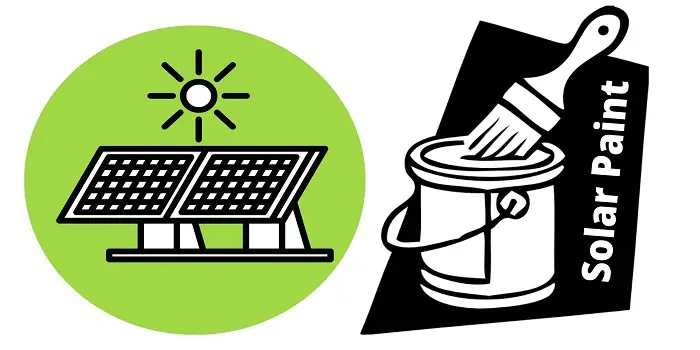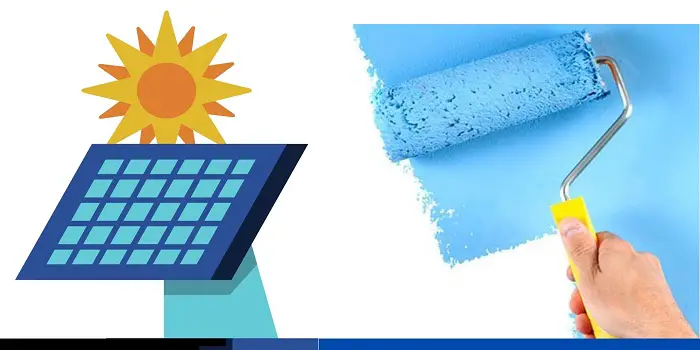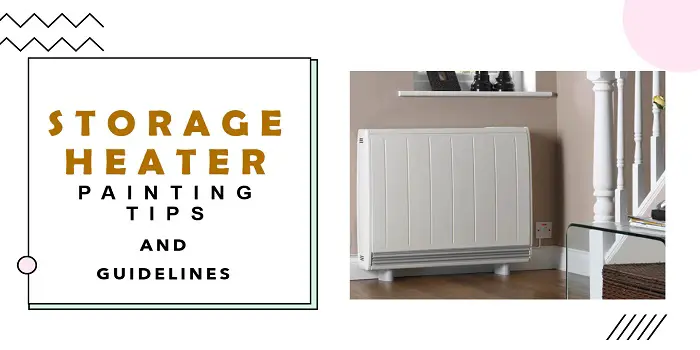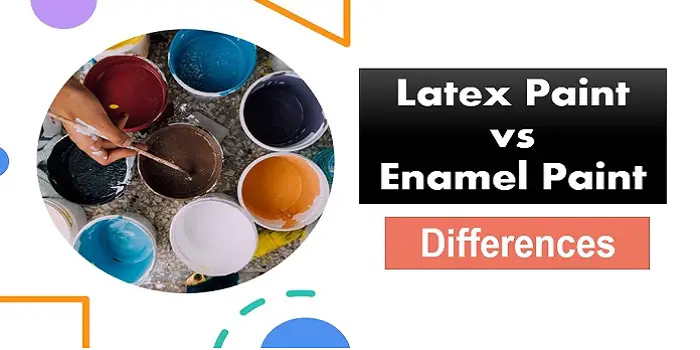
Using products that are environmentally friendly is the goal of all those who want a cleaner, safer home.
There are many new products that help promote self-sufficiency for homeowners while pulling fewer resources that cause pollution.
From smart technology that uses less power to sustainable gardening and even the storage of extra power in large batteries.
But one of the more interesting innovations is solar paint.
For those who are interested in cutting down on their electric bills, solar paint offers a possible solution.
Wondering, is there such a thing as solar paint? If yes, what is it? how does it work? and what are the advantages and disadvantages of using them?
Let’s get into all these details one by one…
What's Here in the Article:
What is Solar Paint?
As the name implies, this is a type of paint that collects the energy delivered by the sun.
Hydrogen is generated by the interaction of sunlight and moisture, which is then collected and used as clean energy.
Consisting of solar panels like thin elements of the film that are liquid in nature, it can be applied to many different types of surfaces, from walls to fences to sheds and more.
At present, the way solar paints are made can be classified into three different types…
- Solar paint hydrogen
- Perovskite solar paint
- Quantum dot solar cells or photovoltaic paint
Not just to paint the homes, but they can also help to produce fuel/electricity that is needed to run your house.
So, while you are saving on electricity bills, you will also be generating some fuel, thereby saving extra money there too.
How Does It Work?
The paint will soak up the moisture from precipitation to condensation, such as dew.
And then it will absorb the energy from sunlight.
Once combined, the paint contains an element known as titanium oxide along with synthetic molybdenum-sulfide, which splits the water collected into two separate parts, hydrogen and oxygen.
It is the hydrogen that provides the power, being moved towards power cells that provide energy for your home.
With hydrogen fuel cells and other advances in power generation being made with this substance, the future of electricity for homes, buildings, and vehicles may be hydrogen.
The use of solar paint augments the power generated by traditional solar panels.
This is because the paint can generate hydrogen in arid climates and even on cloudy days.
Putting both together increases the power being generated in the home.

Pros and Cons of Solar Paint
There are numerous advantages along with some disadvantages to using solar paint.
The most powerful benefit is that the paint will eventually pay for itself, thanks to the hydrogen that is being generated.
Over time, the solar paint will create a considerable amount of hydrogen that can be safely used without any unwanted pollutants or discharge.
1- Aesthetics
Unlike solar panels, which can be unsightly and difficult to place properly, solar paint simply goes on your home just like ordinary paint.
It is a non-intrusive way to generate power without calling attention to your home.
And the good thing is you can even apply them to skylights, skydomes, and conservatory roofs, along with other roofing options.
2- Emergency Use
The power being generated is generally enough to provide electricity to important items in the home during a power outage.
This means that a blackout will not rob your home of all the electricity it needs.
For emergencies, it is comforting to know that the solar paint will generate some power that you can use to keep vital items protected.
3- Combined with Solar Panels
When combined with solar panels, the advantages are magnified as it helps to create a self-sustained home.
While the current technology is not quite sufficient to break free of the power grid, it can create noticeably lower electricity bills thanks to the generation of solar power.
4- Sale Value
There are only a relatively few home improvement options that may raise the sale value of your home.
Solar paint is one of them because it provides additional electricity, which is especially helpful during blackouts.
Plus, it is non-intrusive, unlike solar panels.
This helps to bolster the overall value of the home.
However, while it sounds like there is no downside to using solar paint, there are still some technical issues with the product that makes it less than ideal in certain circumstances.
5- Low Power Generation
The current technology of solar paint is one that generates a low amount of power, even when covering most surfaces of the home.
The current single-layer paint works, but not very well in terms of generating power that is sufficient for most uses.
There is a more advanced form of solar paint being developed, but it is more expensive and harder to apply.
6- Restricted Surfaces
Another issue is that solar paint needs a smooth surface to function properly.
That may rule out certain areas of the home or larger objects that would not be well-suited for solar paint.
This cuts down the amount that can be used and thus, lowers the potential energy generation.
Another issue is the dwindling tax credits that used to be abundant with the encouraging use of solar power.
While solar paint is not all that expensive, it may discourage those who are not pleased with the low power output, even at a lower price.
Future of Solar Paint: Are They for Long Term?
Despite some shortcomings, the technology used to create solar paint is still on the rise.
In fact, it’s just the start, and it’s for certain that solar paints will be there to benefit society in the long term.
This also means that more and more applications can be found which can enhance the current use of the paint.
a) Vehicles:
One obvious choice is to use solar paint on vehicles to increase the power output and lower the demand for the battery.
With hydrogen vehicles being introduced, solar paint spray can augment the supply of hydrogen and thus, provide additional power for the car or truck.
b) Bolster Solar Panels:
As mentioned before, solar paint and solar panels go together quite well.
The same is true for solar power systems of all types that have surfaces to be covered in paint.
Solar paint is an inexpensive way to enhance the power generation of different solar panel systems.
The goal is for solar paint to generate enough hydrogen that it can act as a stand-alone solar generator for homes, businesses, and vehicles.
While that technology is still down the road, the increases in efficiency of solar paint are being made on a regular basis.
Final Thoughts
Currently, solar paint is regulated to augment the power generation of a home.
But it will not be long before it becomes more efficient and lowers the reliance on fossil fuels to a greater degree.
This means that in one-day solar paint may become a vital part of power generation when it creates hydrogen faster and more efficiently.
But even today, solar paint is sufficient to help lower energy costs in the home.
Share the post "What Is Solar Paint – The Pros and Cons"

Douglas Becker (aka Painter Doug) has over twenty years of experience as a painter in Adkins, Texas. At present, he resides in Florida with his family.
From painting multi-storeyed houses, condos, and apartments to large commercial buildings and small offices, he had served various customers in areas not only in Adkins but also in Southwest Florida, Sarasota, Naples, and many more. To know more about him check here.




